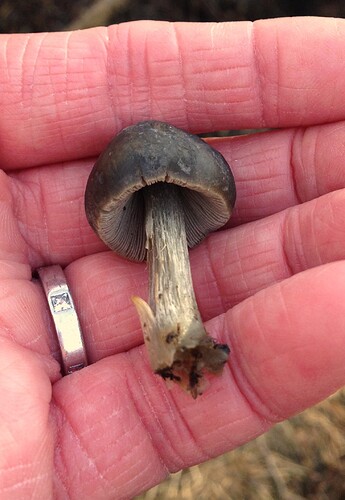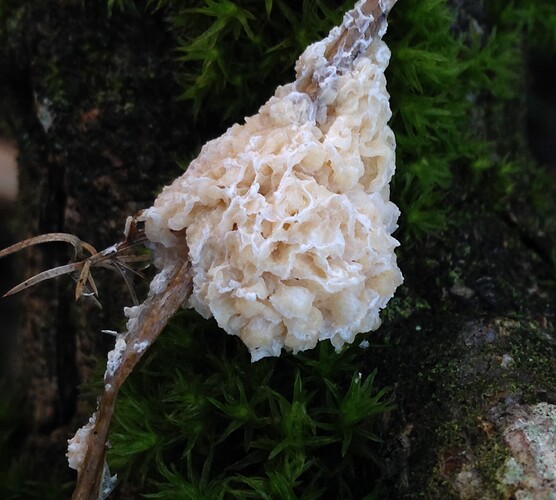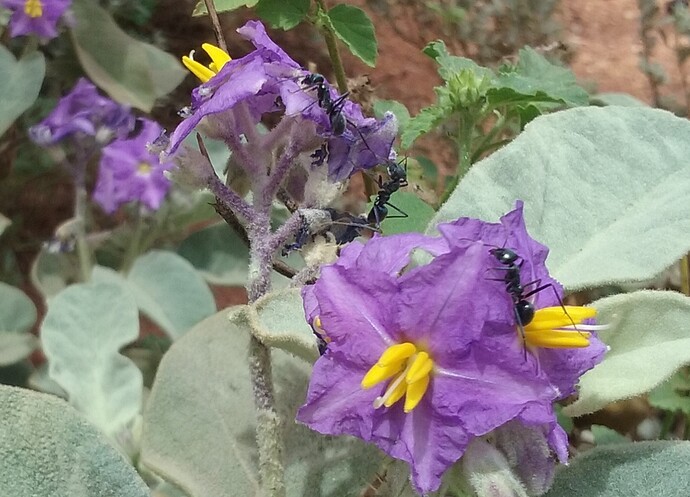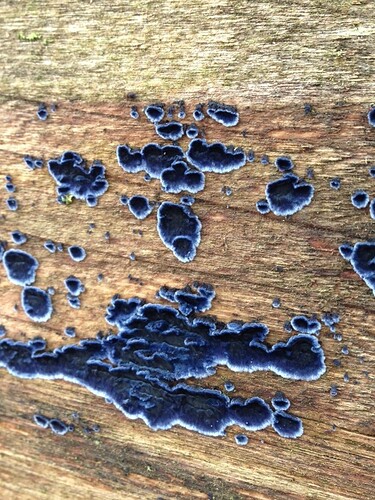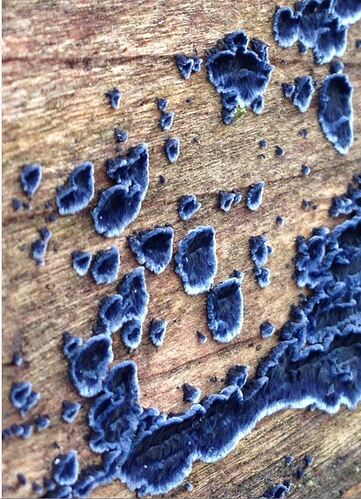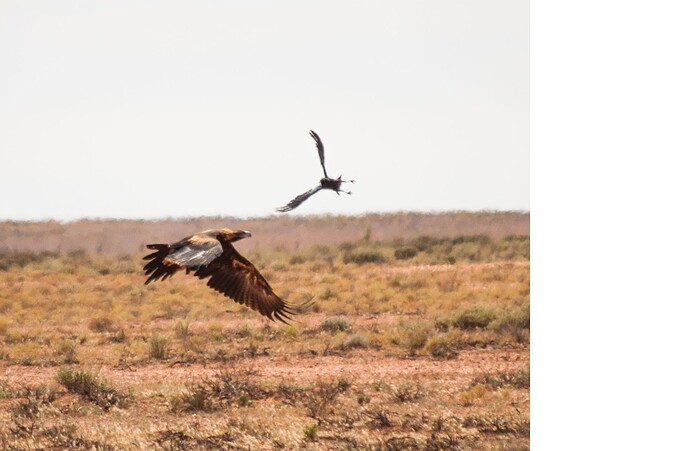We sometimes get the odd one or two, I think only in summer! Whereas the chaffinches are a permanent fixture! Goldfinches are commoner than bullfinches, but not permanent! I saw one the other day, I guess passing through! I think the problem was that those pics were very dark. Our garden does face south, but there is a very steep hill and the sun does not rise above it at all at this time of year, so we depend on reflected light!! I would love to have solar panels, but it is pointless here, as we would generate virtually nothing in winter!!!
Sometimes an email has a rather good attachment.
Bwncath - Buzzard.
Cheers J.P.
Brilliant!! And so well camouflaged. And, er, not hungry???
Neidr Brown (i hope I have that right); I work out in the South Australian Arid lands and couple of people said I should post it here.
These Snakes are among the top 5 most poisonous snakes in the world, we see a few here.
Mynhewch!!
Sorry Pippa, as per the day i’m still not certain about the identity, but those gills do seem to be giving off a pink tint , so i hope we find a more developed (open) specimen soon.
Nice to know our neidr - snakes are relatively harmless.
Elsewhere you have posted.
Ants on bush tomato - Morgrug ar perthi tomato.
And thanks for the input.
Cheers J.P.
Da iawn @Leighton. You should post your other picture here too… we are used to boring tomato plants with yellow flowers… at least I am, I grow them every year in the greenhouse!! What do bush tomatoes taste like? (Oh, if they are poisonous, don’t try to find out!!!) 
Mwynhau!
Llysnafedd llwydni - slime mold (if i use it often enough hopefully i will remember it).
Excellent pIppa, this would appear to be one i have not seen.
From photo’s the best match i can find is Muciturbo crustacea (but don’t assume this is correct).
Really impressed.
Cheers J.P.
I’m still tying to get to grips with the life cycle of these moulds. This one, like the other one I saw at the end of last year seems to be clumped around a blade of grass or twig. Is it feeding off the grass?
Today’s offerings are blue!! Yn edrych fel melfed / looking like velvet.
Prydferth dros ben / very pretty indeed.
You may have been incredibly lucky da iawn,
This seems to fit the description for (Pulcherricium caeruleum) another fungus i have not seen and far from common.
Well a very basic description of their life cycle (eu cych bywyd nhw) starts with the spores releasing minute single celled critters that can be amaeboid or flagelate and are haploid (half a genome).
Two of these which are different (male female doesn’t fit as a description) can combine to become a now diploid (complete genome, their DNA combine) single cell organism.
These can live alone engulfing small food sources like bacteria, or form a community (plasmodium) that cooperate with feeding and nutrient distribution.
When this group decide it is big enough, suffers environmental stress or who really knows what the cue/s is/are they decide to form a fruiting body. (so no more feeding).
This is when we see them as they tend to climb up something to form the fruiting body, assumedly height aids spore dispersal.
Crazy/confusing, yes it is and i know little, but with a little luck through this year we can illustrate and discuss various stages so helping with understanding.
Cheers J.P.
Heddiw.
Pseudoclitocybe cyathiformis - The Goblet.
Bisporella citrina - Lemon disc. (what i didn’t notice when taking this poor photo)
Mollisia s.p. - species of mollisia (upper right looking blue/grey - glas/llwyd).
Must try and get better photo’s tomorrow. (all on the dead beach tree i am monitoring).
Dail celynnen - holly leaf (showing the leaf miners are starting to eat their way between upper and lower surface of leaf).
Could be a slime mold or mycelium of fungus.
Cheers J.P.
A friend called today who has been using a remote camera (movement sensor) left in various places to see what passes day or night with some nice results.
Mochyn daear - Badger.
Iwrch benywaidd - female roe deer.
Carw Mwntjac - muntjac deer.
Cheers J.P.
Heddiw allan.
More eyelash fungus.
Busy bird table. Dau turtur dorchog a un ysguthan - two collared doves and one wood pigeon.
Antrodia xantha (on the end of a pine log) lower image looking up at shelved fungus to show pore structure.
I know little about moss but here is a tentative start.
Tortula muralis - Troellog y muriau.
Troellog y muriau. Taldra hyd at 1cm.
Mwsogl eang ei ddosbarthiad ac yn aml yn arbennig o gyffredin. Mae’n tyfu ar ben waliau brics ac ar greigiau lle mae’n ffurfio clustogau isel.
Dail hirgrwn a â phigyn main ar blaen. Mae’r capsiwlau sborau datblygu, ar unionsyth goesynnau hir a main ; maent yn felyn pan fyddant yn ifanc, ond yn aeddfedu’n frown.
The wall twister. Height up to 1cm.
Moss widespread and often are particularly common. It grows on top of brick walls and on rocks where it forms low cushions.
Oval leaves and a slender spike on the front. The capsules spores develop on long, thin stalks upright; they are yellow when they are young, but maturing brown.
Cheers J.P.
Heddiw.
Cen ar mwsogl ar frigau y goeden - lichen and moss on tree twigs. (click on image for full size).
Nid yw coeden yn unig yw coeden ond gymuned - a tree is not just a tree but a community.
This is one a Draenen wen - Hawthorn, the same will be seen on oaks but up above my camera level.
Note buds starting to look like they are swelling ready for spring.
Cheers J.P.
Llysnafedd llwydni arall - another slime mold (found under rotten beech log).
Plebia tremellosa (no English or Welsh name).
This is growing on old stump of bedwen arian - silver birch, top image, center image shows the surface looking somewhat hairy, lower image the gills are as wavy and soft as they look. (so the fungus is getting nutrition from the old wood, and it’s spores may be food for slime molds).
Unwaith eto gallwn weld ailgylchu natur - once again we see nature recycling.
Cheers J.P.
Hi here is another pic from South Aust taken by one of my work colleages.
dau Cyn Cynffon eryr (Aquila audax)
Mwynhau!!
Wnes i weld Saith Emu (Perth Cyw
![]() ) ar gweith heddu.
) ar gweith heddu.
